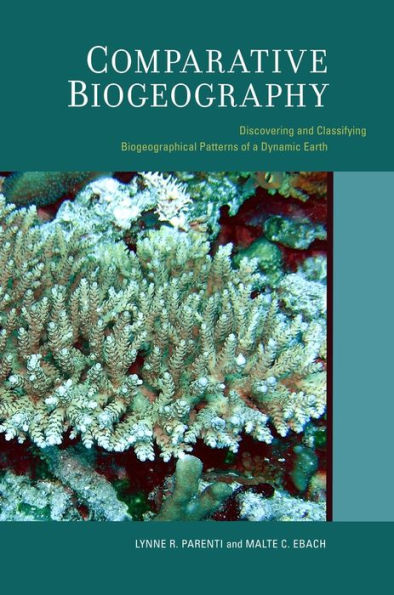Comparative Biogeography: Discovering and Classifying Biogeographical Patterns of a Dynamic Earth
To unravel the complex shared history of the Earth and its life forms, biogeographers analyze patterns of biodiversity, species distribution, and geological history. So far, the field of biogeography has been fragmented into divergent systematic and evolutionary approaches, with no overarching or unifying research theme or method. In this text, Lynne Parenti and Malte Ebach address this discord and outline comparative tools to unify biogeography. Rooted in phylogenetic systematics, this comparative biogeographic approach offers a comprehensive empirical framework for discovering and deciphering the patterns and processes of the distribution of life on Earth. The authors cover biogeography from its fundamental ideas to the most effective ways to implement them. Real-life examples illustrate concepts and problems, including the first comparative biogeographical analysis of the Indo-West Pacific, an introduction to biogeographical concepts rooted in the earth sciences, and the integration of phylogeny, evolution and earth history.
1112439037
Comparative Biogeography: Discovering and Classifying Biogeographical Patterns of a Dynamic Earth
To unravel the complex shared history of the Earth and its life forms, biogeographers analyze patterns of biodiversity, species distribution, and geological history. So far, the field of biogeography has been fragmented into divergent systematic and evolutionary approaches, with no overarching or unifying research theme or method. In this text, Lynne Parenti and Malte Ebach address this discord and outline comparative tools to unify biogeography. Rooted in phylogenetic systematics, this comparative biogeographic approach offers a comprehensive empirical framework for discovering and deciphering the patterns and processes of the distribution of life on Earth. The authors cover biogeography from its fundamental ideas to the most effective ways to implement them. Real-life examples illustrate concepts and problems, including the first comparative biogeographical analysis of the Indo-West Pacific, an introduction to biogeographical concepts rooted in the earth sciences, and the integration of phylogeny, evolution and earth history.
85.0
Out Of Stock
5
1

Comparative Biogeography: Discovering and Classifying Biogeographical Patterns of a Dynamic Earth
312
Comparative Biogeography: Discovering and Classifying Biogeographical Patterns of a Dynamic Earth
312Hardcover(First Edition)
$85.00
Related collections and offers
85.0
Out Of Stock

Product Details
| ISBN-13: | 9780520259454 |
|---|---|
| Publisher: | University of California Press |
| Publication date: | 11/18/2009 |
| Series: | Species and Systematics , #2 |
| Edition description: | First Edition |
| Pages: | 312 |
| Product dimensions: | 6.10(w) x 9.10(h) x 0.90(d) |
About the Author
What People are Saying About This
From the B&N Reads Blog
